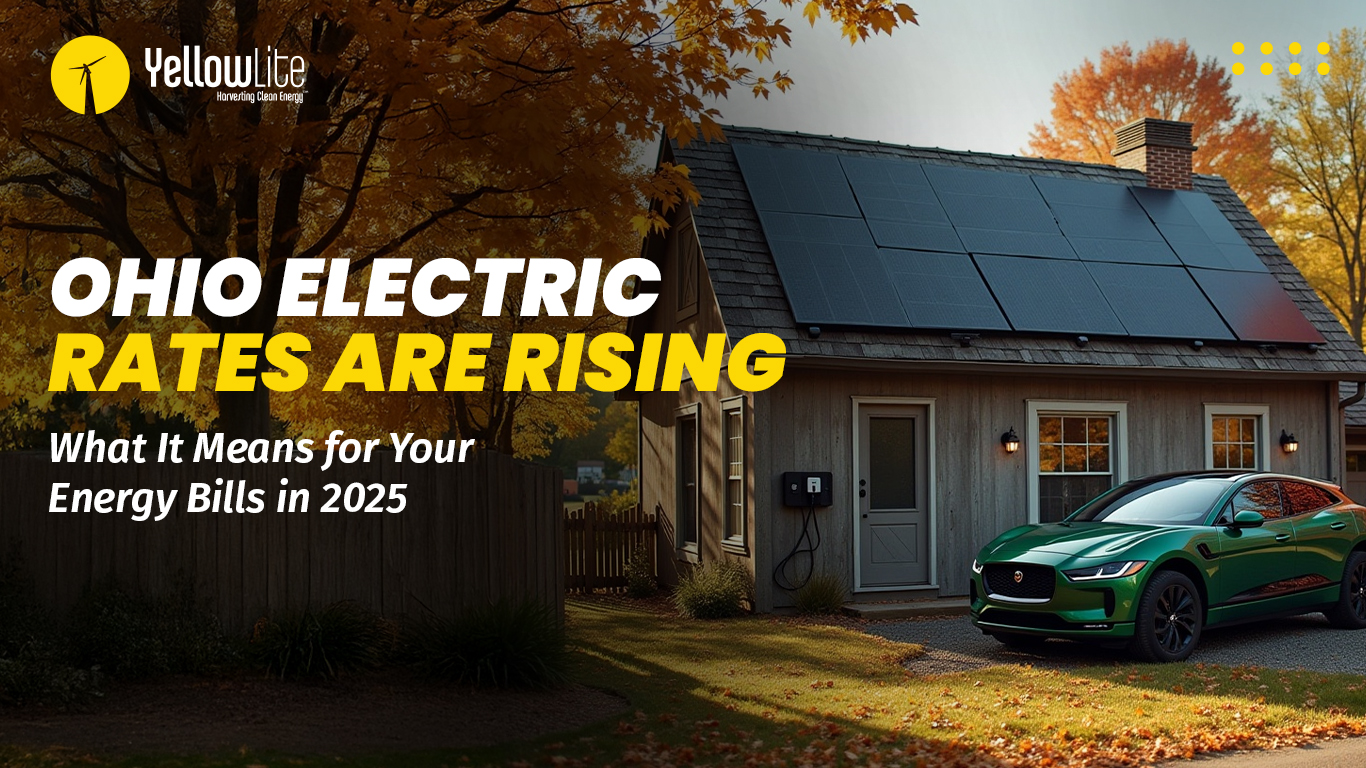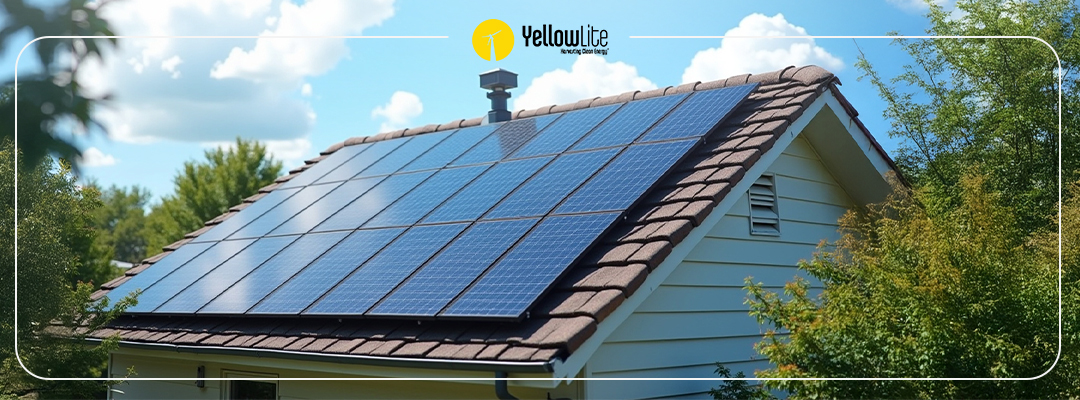As America leans increasingly towards sustainable and renewable energy sources, solar power has emerged as the top choice. But how does this clean, abundant energy source integrate with the U.S. power grid?
In this blog, we'll explore the complexities of how solar power and the electrical grid coexist and cooperate. We'll start by explaining the grid and how it functions as the backbone of our electricity supply. We'll discuss how it spans the nation and the challenges it faces in today's rapidly evolving energy landscape.
We’ll explain how solar energy, generated from individual rooftops to large solar farms, integrates into this existing grid system.
Learn more about how solar energy and the U.S. power grid work together to light up your home.
What is the power grid?
The power grid is a vast network that delivers electricity from its generation source to our homes and businesses. It's an engineering marvel first envisioned (on a far smaller scale) by Thomas Edison, connecting power plants to consumers across cities, states, and countries. The grid consists of:
- Power Generation Stations: These are the facilities where electricity is produced. They can be powered by various sources, including fossil fuels (such as coal and natural gas), nuclear energy, or renewable sources (such as solar, in our case).
- Transmission Lines: These are the high-voltage lines you often see on tall metal towers stretching across the landscape. They carry electricity over long distances from power plants to local communities.
- Substations: These installations reduce the high voltage from transmission lines to a lower voltage suitable for local distribution. They are a crucial link between long-distance transmission and local delivery.
- Distribution Lines: These are the lines you see along streets and alleys, carrying electricity from substations to homes and businesses. They operate at a much lower voltage than transmission lines.
- Transformers: Often seen mounted on poles or on the ground near buildings, transformers lower the electricity voltage to make it safe for homes and businesses.
- Meters and Connections: Your home connects to the grid through a meter that measures how much electricity you use.
Where is the grid?
The U.S. electrical grid isn't just a single entity; it's a vast, interconnected network that spans the country. Here's an overview of the grid's geographical distribution:
Nationwide Coverage
- Coast to Coast: The U.S. power grid covers the entire country, from cities on the East Coast to the remote areas on the West Coast and everything in between.
- Rural and Urban Areas: It services both densely populated urban areas and sparsely populated rural regions, providing electricity to nearly every household and business throughout the country
Regional Grids
- Interconnections: The U.S. grid comprises three major interconnections - the Eastern Interconnection, the Western Interconnection, and the Texas Interconnected System (ERCOT). These large grid systems are interconnected but operate independently. Each region has its unique set of resources, challenges, and energy demands, influencing how electricity is generated and distributed.
Local Distribution
- Local Utilities: Within these interconnections, local utility companies manage electricity distribution to homes and businesses in their respective areas. The location and capacity of local grids can significantly impact community development and access to renewable energy options like solar power.
How solar power is integrated into the grid
Solar panels, usually installed on rooftops or in large solar farms, convert sunlight into electrical energy using photovoltaic cells. This direct current (DC) electricity is converted into alternating current (AC) using inverters, making it compatible with the grid. The AC electricity is fed into the grid through a connection point, often with a smart meter that tracks the amount of electricity produced and consumed.
To address the variability of solar power, grid operators use energy storage systems like batteries, demand response strategies, and integration with other energy sources to maintain a steady and reliable power supply. Additionally, advanced forecasting and grid management technologies help to anticipate and adjust for changes in solar power generation due to weather or time of day.
As solar technology advances and becomes more cost-effective, its integration into the grid represents a significant step towards a sustainable energy future.

The grid faces significant challenges
While robust and extensive, the grid faces challenges.
Aging Infrastructure: Much of the grid’s infrastructure is decades old and was designed for a different era of energy usage. Aging equipment and outdated technologies can lead to inefficiencies, frequent breakdowns, and increased vulnerability to outages.
Increasing Demand: As our population grows and technology advances, the electricity demand continues to rise. The existing grid must adapt to handle these increasing loads without compromising reliability and efficiency.
Integration of Renewable Energy: Incorporating renewable energy sources like solar into the grid presents technical challenges. As these sources are intermittent and decentralized, it can be difficult to manage the consistent flow of electricity.
Cybersecurity Threats: The grid's reliance on digital technologies makes it increasingly susceptible to cybersecurity threats. Protecting the grid from potential cyber attacks is a growing concern.
Climate Change and Extreme Weather: Climate change leads to more frequent and severe weather events, such as hurricanes, floods, and wildfires. These events can cause significant damage to the grid infrastructure, leading to prolonged power outages. Texas faced electric grid blackouts in 2021 due to a winter storm event, resulting in power losses for 4.5 million homes, $195 billion in property damage, and 57 deaths. Since then, Texas has become the #2 solar investor behind California. The Golden State’s record-breaking heat wave of September 2022 nearly broke the power grid. It’s no wonder they are the nation’s leading investor in solar.
Grid Resilience: Ensuring the grid’s resilience against various disruptions, ranging from natural disasters to technical failures, is a constant challenge. Building a more resilient grid requires significant investment and innovation.
Geographic Disparities: There are disparities in grid infrastructure and capacity across different regions of the U.S. Some areas have more modernized systems, while others are lagging, affecting overall grid efficiency and reliability.
What’s the solution?
These challenges highlight the need for significant investments in grid modernization, incorporating advanced technologies, and adopting more sustainable energy practices. Solar power's ability to generate electricity locally and reduce reliance on centralized power generation is crucial in addressing some of these challenges.
In late 2023, as part of 2021’s Bipartisan Infrastructure Law, the Biden-Harris administration announced up to $3.9 billion available through the U.S. Department of Energy’s Grid Resilience and Innovation Partnership Program (GRIP) to enhance grid flexibility and resilience and climate change and extreme weather.
Per the DOE, GRIP focuses on projects that:
Improve electric transmission by increasing funding and advancing interconnection processes for a faster build-out of energy projects; create comprehensive solutions linking grid communications systems and operations to increase resilience and reduce power outages and threats; and deploy advanced technologies such as distributed energy resources and battery systems to provide essential grid services, ensuring American communities across the country have access to affordable, reliable, clean electricity.
This act is a crucial step toward modernizing the power grid and making it more efficient, reliable, and capable of meeting future energy demands.
How solar will improve the reliability of the grid
As the U.S. adopts more sustainable energy practices like solar, we can significantly enhance the power grid's reliability. Renewable energy sources, like solar, are abundant and inexhaustible, thus reducing dependence on finite resources such as fossil fuels. This diversification of energy sources can mitigate the risks associated with over-reliance on single energy sources. Sustainable energy practices like solar involve developing decentralized power systems. This decentralization means that the failure of one energy source would have a less catastrophic impact on the grid as a whole. Solar comes with battery storage options that can store excess energy when production is high and release it when needed, further stabilizing the grid. The shift towards sustainable energy contributes to environmental conservation and ensures a more resilient and reliable energy infrastructure.

The future is bright for the U.S. power grid
Integrating solar power into the U.S. electrical grid marks a pivotal step in the nation's journey toward sustainable energy. Aging grid systems, increasing energy demands, and the need for resilience against climate change and cyber threats drive the shift toward more decentralized and renewable energy sources. Solar power is vital in modernizing the grid, enhancing efficiency, and reducing reliance on traditional, centralized power generation methods.
The adoption of solar power, supported by initiatives such as the Biden-Harris administration's Grid Resilience and Innovation Partnership Program, is poised to dramatically improve grid reliability and efficiency. By harnessing the power of the sun, a renewable and inexhaustible resource, and coupling it with advanced technologies like battery storage, the U.S. is paving the way for a grid that is not only more resilient to environmental and technological challenges but also capable of meeting the energy needs of future generations in a sustainable and environmentally friendly way. This transition to solar and other renewable sources signifies a transformative era in energy production, promising a cleaner, more reliable, and forward-thinking approach to power generation and distribution.
Get it right with Yellowlite
Do you have any grid-related questions? Contact our team of pro-solar experts today!



